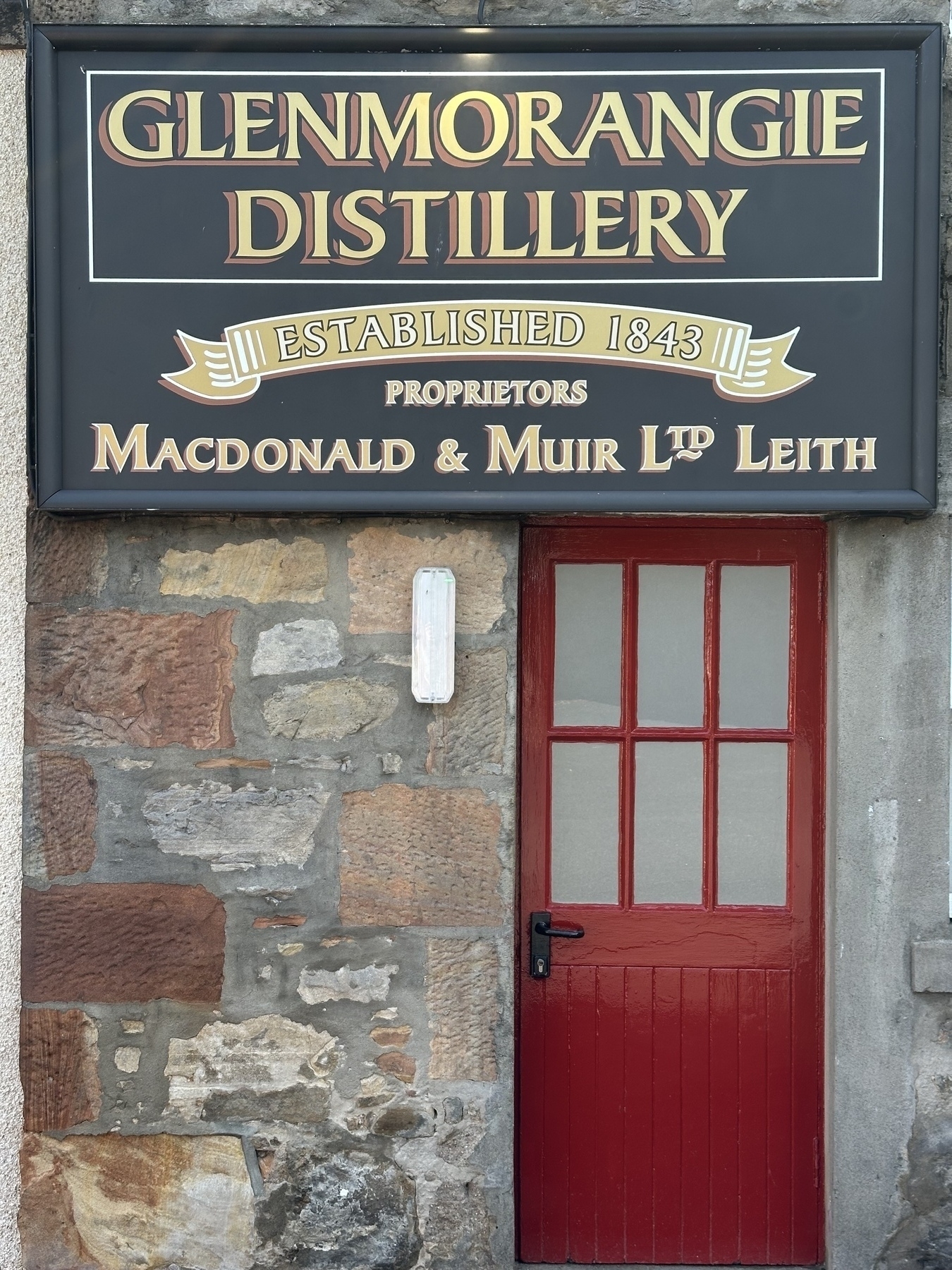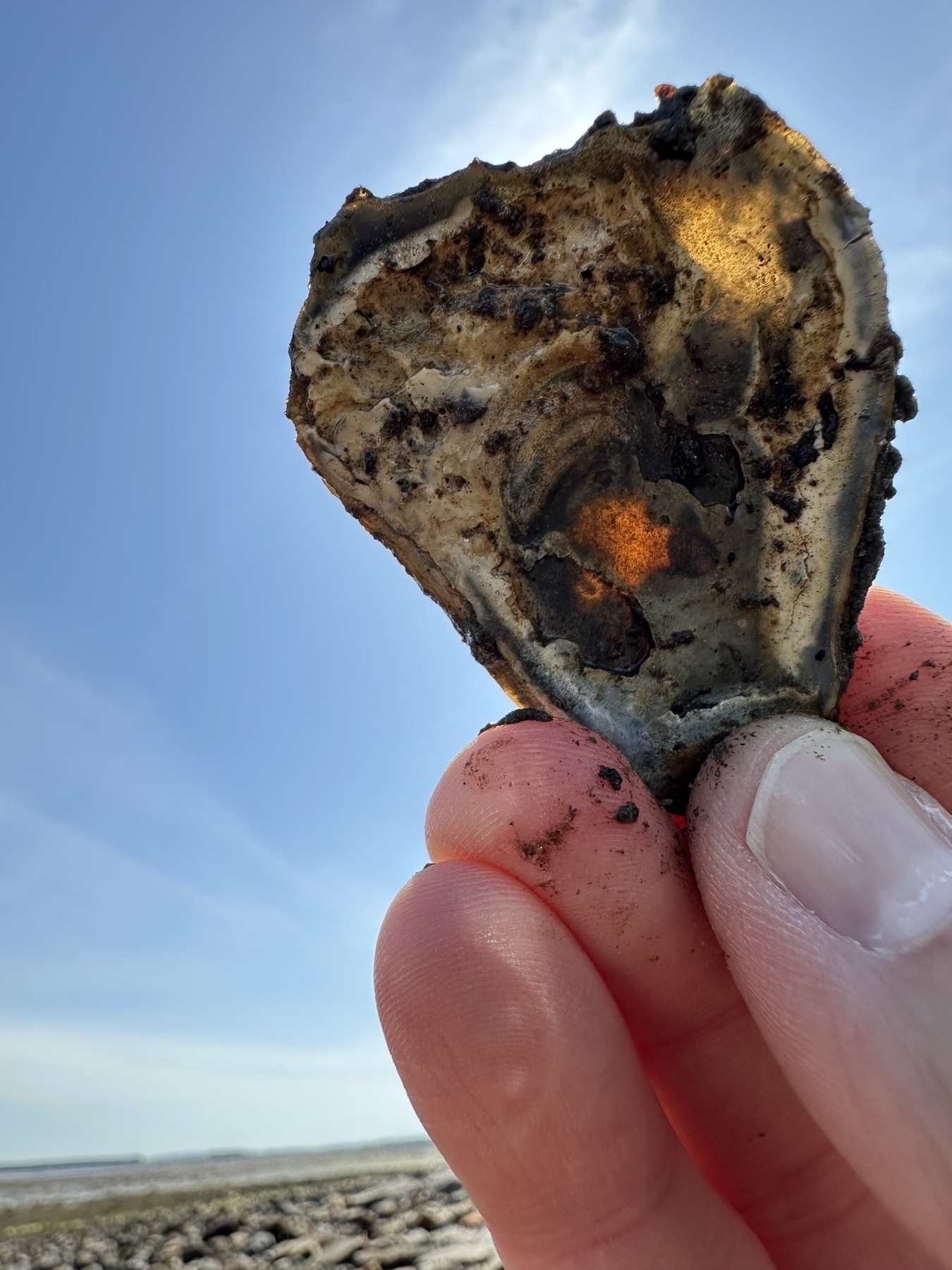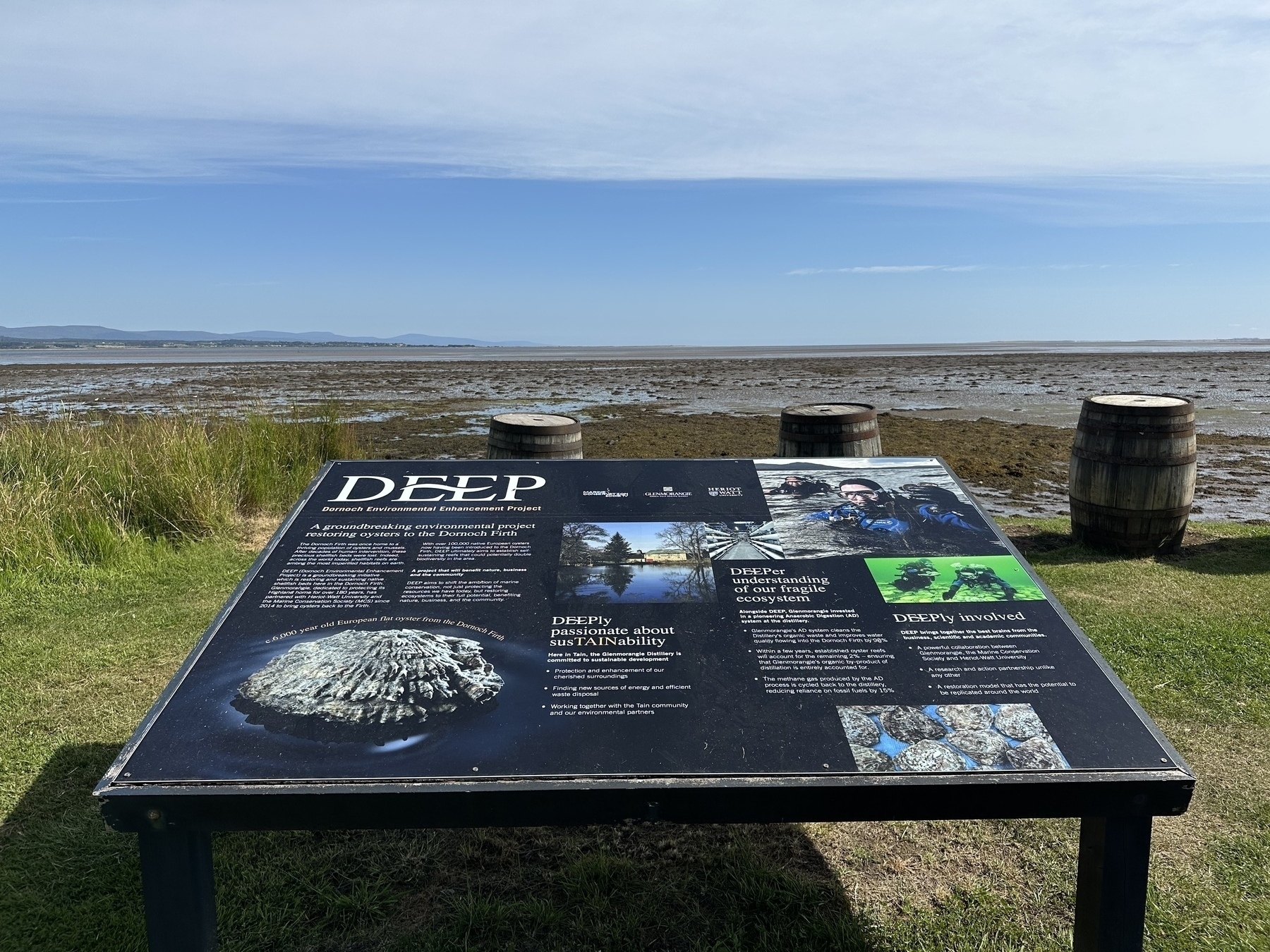Glenmorangie Distillery and Oyster Bed Restoration in Dornoch Firth
Spending a few days in Tain, Scotland this week to learn about the Dornoch Environmental Enhancement Project (DEEP) being carried out by the Marine Conservation Society, researchers at Heriot-Watt University, and the Glenmorangie Distillery.
The distillery is funding a long-term project to restore oyster beds that were destroyed by overharvesting.
We spent part of our day doing “citizen science” in surveying for both native oysters and invasive species, and in learning about the partnership between the university, the MCS, and the distillery.
Most of the time when I tell people I have been studying malacology and mussel/clam/oyster ecology, people ask me “can you eat them?” (FWIW, no, I don’t eat them.)
When we only think of bivalves as food we forget that they are important in their ecosystem as water filters (up to 200L per day per oyster) and as creators of habitat for many species. Established oyster beds become nurseries for fish and their oceanic neighbors.
Reestablishing a bed we have destroyed is a very long and slow process.
Thankfully, this project has a distillery as a partner. Distilleries are among a handful of businesses that understand that sometimes good things take years to create, and they’re worth long-term investments.
This has me wondering what it would take to get my own community to commit to long-term restoration of the environment, with the understanding that what we are restoring is something that will pay for itself in the long term.
We tend to think in very short terms for these things, seeking a quick ROI. Or we ask for repeated philanthropic or governmental investment without any expected return. These are losing strategies. My ideal investments in environmental sustainability pay for themselves.
This presents a hurdle for the imagination. If you’re accustomed to thinking of environmental action as a sacrifice, it might seem foreign to think of it as an investment with a slow but steady long-term yield.
My students understand this. Perhaps their youth allows them to take the long view.
I’ll keep working on persuading the older people in my community that it’s worth investing in the future.
And I’ll keep inviting the young people to learn about bivalves that do more than provide us with an expensive snack. 🦪🦪🦪


